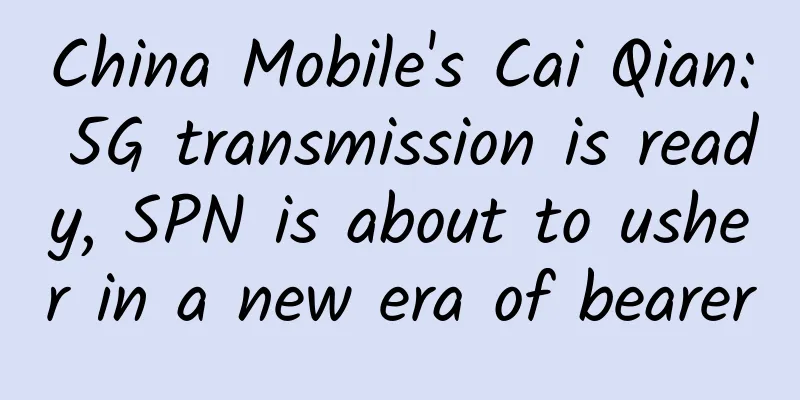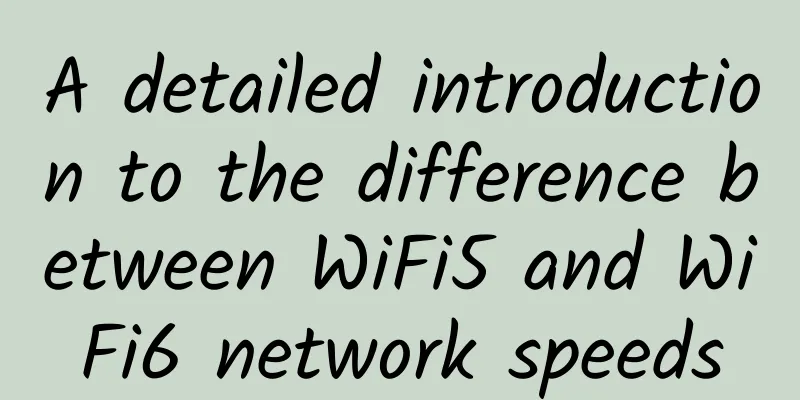From rough to soft decoration: 5G R17 standard officially frozen

|
After many twists and turns, the 3GPP R17 standard has finally been finalized! According to information from the well-known industry self-media "S2 Micro Salon", the 96th 3GPP RAN meeting held in Budapest, Hungary was successfully concluded at 10:04 pm Beijing time on June 9. At this meeting, the 5G Release 17 standard was announced to be frozen, marking the official completion of the second evolution version (third version) of 5G standards. According to industry insiders, 3GPP will announce the freeze of standards at 16:00 local time in Budapest, Hungary today (22:00 Beijing time). In fact, in March this year, 3GPP completed the functional freeze of Release 17 (i.e., completed the system design); this meeting completed the freeze of the ASN.1 protocol of Release 17; in layman's terms, all processes have been completed, all details have been determined, and it is time to roll up your sleeves and get to work! Industry insiders also generally believe that the completion of Release 17 not only marks the successful completion of the first phase of 5G technology evolution (R15/R16/R17), but also proves the strong resilience of the mobile ecosystem. In the words of relevant experts from China Mobile Research Institute, if the R15 version is the "rough version" of the 5G technology standard, then the R16 version can be understood as the "fine decoration", and the R17 version is the "soft decoration" on top of the "fine decoration", which has the effect of adding the finishing touch. From R15 to R17: Running fast and never stoppingBased on the stage of technology evolution, the industry generally calls the three versions Rel-15/16/17 the first stage of 5G evolution; the subsequent three versions Rel-18/19/20 are called the second round of 5G innovation, or 5G Advanced! As the first version of the 5G standard, R15 focuses on the improvement of enhanced mobile broadband (eMBB), that is, faster network transmission rate, mainly for the 2C market. From the perspective of existing network applications, the first 5G version has laid a good foundation and provided an overall architecture for the subsequent 5G development. It can be said to be the cornerstone of the future evolution of 5G. In terms of spectrum, R15 introduces support for Sub-7GHz and millimeter wave. Before this, the industry mostly talked about Sub-6GHz, and Rel-15 expanded the spectrum to Sub-7GHz and millimeter wave bands; in terms of 5G architecture, R15 supports scalability and forward compatibility, that is, subsequent 5G designs can be expanded on the basis of the Rel-15 framework. In addition, R15 introduces support for basic ultra-reliable low-latency communications (URLLC); and also introduces eMTC/NB-IoT technical support. The future and greater value of 5G lies in vertical industries, and expansion into industries is also the focus of the subsequent R16. One of the major extended features of R16 is the introduction of support for unlicensed spectrum (NR-U), making 5G applications more flexible. At the same time, R16 also introduced NR V2X for the first time, and R16 introduced 5G NR-based direct communication for C-V2X. These features are all new technologies in R16 that promote the expansion of 5G to vertical industries. In addition, R16 also supports 5G broadcasting and integrated access and backhaul (IAB). These technologies have been continuously expanded in the subsequent Rel-17 version and have received better and more complete support. R17 continues to advance the first two 5G standard versions by focusing on improving commercial features, introducing new functions, and exploring new directions. For example, in terms of spectrum, one of the extended features supported by R17 is the extension of the millimeter wave frequency band to 71 GHz. The millimeter wave frequency band defined in R15 can actually only reach 52.6 GHz. Rl17 extends the millimeter wave frequency band from 52.6 GHz to 71 GHz. The second important extended feature in R17 is the introduction of "NR-Light" (RedCap) for less complex IoT terminals. By tailoring 5G functions and features, 5G NR can be popularized to less complex IoT terminals, which is conducive to reducing the energy consumption and price of such terminals. Another important new feature introduced by R17 is non-terrestrial communication (NTN), that is, satellite communication. R-17 also supports enhanced industrial IoT, positioning and V2X. In addition, R17 also introduces enhanced integrated access and backhaul (IAB) and RF repeaters. From "rough" to "soft furnishing": three major features of the R17 standard According to experts from China Mobile Research Institute, the R17 standard has three major characteristics:First, it is an improvement on the commercial features. R17 was developed after the large-scale commercial use of 5G, drawing on the experience and shortcomings of actual deployment and achieving the linkage and coordination between standards and commercial use. On the one hand, we optimize the implementation of key functions and improve the existing network applications. For example, we introduce speed-based cell reselection, measurement and demodulation enhancement solutions to improve the user experience in high-speed rail scenarios; introduce a statistical method for wireless resource utilization based on space division multiplexing to meet our company's needs for accurate assessment of network load; introduce network slice access number, session number, and bit rate control mechanism to ensure SLA; introduce DNS-based local service search function for edge computing; support business continuity in mobile state, enhance network converged access capabilities to meet the evolution of converged core networks; support endogenous determination to meet the independent provision of deterministic services in industrial production scenarios; improve operational billing capabilities to further promote the deployment and implementation of new 5G industry capabilities, etc. On the other hand, the performance of key indicators is improved and the application scenarios are deepened. For example, the uplink service channel coverage can be improved by up to 6dB compared with R16, the positioning accuracy in the ideal environment of indoor factories is improved from <3m of R16 to <0.5m, the energy consumption of terminals in idle and inactive states can be saved by 20%~30% compared with R16, and the air interface timing accuracy of the delay-sensitive network of the industrial Internet is improved from ±540ns of R16 to ±145ns~±275ns, and multi-directional timing is supported. The second is to introduce new functions. In order to further expand the application scenarios of 5G, R17 introduced "new terminals", "new networks" and "new functions". The lightweight new terminal (RedCap) can meet the needs of low-cost, low-power, and medium-data-rate IoT by reducing terminal bandwidth and the number of antennas, simplifying duplex transmission, cutting protocol process functions, and reducing power consumption overhead. It complements NB-IoT and is suitable for a variety of application scenarios such as factory sensing, video surveillance, and wearable devices. The new space-ground integrated network (NTN) technology achieves coverage of thousands of kilometers through satellite sky-link relays, complementing ground communications to build a three-dimensional integrated network of space, air and ground, providing users with ubiquitous and omnipresent communication services. The newly designed multicast broadcast function (MBS) achieves efficient and reliable transmission of multicast broadcast services through flexible transmission modes and feedback mechanisms, serving a variety of application scenarios such as public safety and live broadcast of events. The third is to explore new directions. 5G networking is flexible and has complex topology. Traditional network optimization faces problems such as high cost and inability to model, which urgently need to be solved through cross-domain technologies such as artificial intelligence. R17 explored the integration of 5G air interface and AI technology for the first time, formulated a unified functional framework, and laid the foundation for the 5G-Advanced evolution standard to realize AI-enabled 5G intelligent air interface design; at the same time, R17 designed a layered network big data intelligent analysis architecture for the first time, providing platform capabilities, enabling vertical industry expansion, and meeting the deployment requirements of large operators. |
<<: Why is C-band spectrum important for 5G?
Recommend
Wi-Fi 6 is not yet popular, so why has the latecomer Wi-Fi 7 become a battlefield for giants?
When it comes to Wi-Fi, everyone is familiar with...
Inspur Networks launches new data center products to build up new potential
In recent years, with the rapid development of in...
Are you still using 4G? 6G is coming soon. The battle for 6G among countries has quietly started nearly 20 years ago.
When China leads the world in 5G technology, the ...
How to implement Nodejs inter-process communication
[[350246]] This article is reprinted from the WeC...
It will take time for 5G to achieve a breakthrough from "1 to N"
[[402114]] Recently, the Ministry of Industry and...
In the data era, Ruishu Information helps operators build a security line of defense for application data with five tips
On December 10, 2021, the "2021 (11th) Telec...
Will Wi-Fi cost more than 5G connections?
This seems to subvert common sense! Recently, Eri...
Understand TCP, UDP and port numbers in 10 minutes
When we start learning network programming, we fi...
Want to handle tens of millions of traffic? You should do this!
Your boss asks you to handle tens of millions of ...
How remote work is changing the future of network management
During the COVID-19 pandemic, businesses have und...
Asia Pacific to account for 60% of global 5G connections by 2026
[[422145]] According to new market research, ther...
PacificRack: $8/month Windows VPS-4GB/60G SSD/30M unlimited/Los Angeles
At the end of last month, I just shared the news ...
Some works of the first 51CTO Developer Competition have been revealed, waiting for you to add to it!
/* Live to change the world Here, every work may ...
15,000 Stars! Programmer's "Internet Swiss Army Knife"!
Introduction CyberChef is a web application for e...
How is LOCVPS? Simple test of LOCVPS Hong Kong Kwai Wan VPS
Among the Chinese merchants shared in the blog, L...









